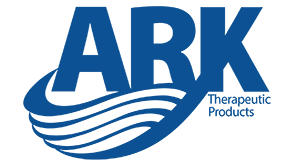How to "Turn Your Voice on" - Teaching the Difference between Voiced & Unvoiced Phonemes
Posted by Debra C. Lowsky, MS, CCC-SLP on 13th Apr 2014
Speech therapists have a variety of classifications / categories for speech sounds. One such category is voiced versus unvoiced phonemes. Voiced phonemes are sounds made when the vocal folds vibrate. Unvoiced phonemes are sounds that do not require the vocal folds to vibrate.

.
As an example, say "sss" and then "zzz," listen and feel the difference. 'S' requires only air, whereas for 'Z,' your vocal folds activate/buzz. Older children and adults can usually hear and feel the difference. For younger children, you may have to teach them how to use their voice:
.
1. Ask the individual/child to put their hand on their larynx/throat, then make a vowel sound. Any vowel sound that they can make is fine, as all vowels are voiced. With their hand on their throat, they'll be able to feel the vibration.
2. Teach him/her that this vibration is called "making it buzz." By labeling it so, you can request/prompt them later on to "make your voice buzz." You can also use the prompt "turn your voice on."
3. Model by placing your hand on your throat and saying "ah," for example. The child can put their hand on your larynx/throat and feel it buzz/vibrate. Ask, "did you feel that?" Then make a /t/ sound. Have the child tell you if they felt your throat/larnyx buzz. This will help them to feel and understand the difference between voiced versus unvoiced phonemes, discriminating between the two. If you remember Helen Keller's teacher doing this in the movie, this is why!
4. If the child still has difficulty turning their voice on/off, use a kazoo. These fun horns make a sort of quacking/buzzing noise when you activate your voice (not when you blow through them). It's as if they were made to teach voicing in speech therapy! So have the child hold the kazoo in their mouth and prompt them: "turn your voice on."
.
Keep in mind that it may take many sessions for this concept to "click." Practice for a bit and then move onto something else. Come back to it later on in the session and again in future sessions. Even if the child is able to activate the kazoo in the first session, revisit it again several times to make sure it sticks. You can also alternate between other activities that don't require voice, such as blowing bubbles or blowing cotton balls across the table ("did you hear a buzz when you blew?"). Take turns tooting back and forth with the kazoo. Or "kazooing" songs such as Happy Birthday.
.
.
As an example, see the first part of the video above. When prompted to say the /d/ sound, the child pronounced /t/ instead. So the articulators were in the right place (both /t/ and /d/ are tongue tip sounds produced when the tongue tip is on the alveolar ridge behind the upper front teeth). However, /d/ sounded like /t/ because she didn't know to use her voice. So we worked on learning how to control her voice with the kazoo, and after much practice, we now have a very solid voiced /d/! .
Debbie
Debra C. Lowsky, MS, CCC-SLP
.

